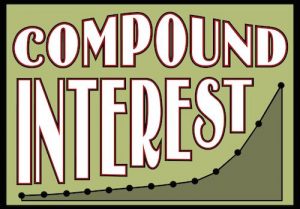 Sounds improbable, doesn’t it? Sounds like you’d need to be Warren Buffett, get insider access to some secret investment vehicle or have an extraordinary amount of luck. No, no and no. All it took was an initial investment, discipline and patience.
Sounds improbable, doesn’t it? Sounds like you’d need to be Warren Buffett, get insider access to some secret investment vehicle or have an extraordinary amount of luck. No, no and no. All it took was an initial investment, discipline and patience.
Here we go
We’re all familiar with the S&P 500, the most popular and most vanilla index of them all. Five hundred big US stocks spanning all industry sectors. Warren Buffett uses the S&P as his comparison benchmark for the annual Berkshire Hathaway results. We know Warren is wildly successful, and his track record versus the index is phenomenal. But how about the plain old S&P? Not too shabby, as he highlights in his 50th anniversary Berkshire Hathaway Annual Report. The index, including reinvestment of dividends, has compounded at 10 percent annually for the last half century.
That 10 percent rate turns $1M into $112M in fifty years. Here’s a year-by-year table from the Berkshire report comparing Warren’s rate of return against the S&P. Warren wins by a mile, with a annualized return around 20 percent. But think about this: the remarkable power of that 10 percent rate was available to any investor (or her heirs) willing to take the risk inherent in owning stocks.
Double, double and keep doubling.
We have a math shortcut in investing called the Rule of 72. By this rule, a security returning 10 percent annually doubles in value in about seven years. Leave it alone for fifty years and compounding delivers 112x. If you don’t have that much time, consider the 56x jackpot you’d have at 43 years, or even the 28x you’d see at 36 years. As Einstein said, “the most powerful force in the universe is compound interest.”
The future is not the past
Of course past performance is no indicator of future results. We can’t go back in time 1965 to get on the 10 percent train. But is there some readily available index investment that will return 10% annually over the next 50 years? Maybe. It might be the S&P 500. Or perhaps an international index. Or an industry index. We can’t know for sure until 2065. But owning a diversified mix of index ETF expands your potential to earn that kind of return.
And if 10 percent doesn’t happen
Face it, a 10 percent rate for 50 years is no sure thing. Let’s be more modest and compound at a lower rate. You pick it from the table below anywhere from 1 to 12 percent and see what happens to your $1M in fifty years. At 8 percent, 50 years of doing nothing returns 54x. By the way, we included 12 percent in the table because since 1988 some assets have compounded at similarly high rates, like Hong Kong (12 percent), Denmark (14) and Brazil (15). You couldn’t have easily bought them then but now these and many other assets classes have ETFs. (Data courtesy of Windham.)

Multigenerational thinking. Or not.
Continuous compounding — letting time and percent signs do all the work — is the core principle of multigenerational investing. A 112x bequest can completely change the lives of heirs. But not everyone has a next generation. Some who do aren’t interested in passing on assets. No worries. You can still invest as if your money will compound for 50 years and get the benefit for as long as you are alive. Talk with your advisor about diversification as a way to increase your chances of turning patience into a big number for you and/or future generations.
John Osbon – josbon@osboncapital.com
Weekly Articles by Osbon Capital Management:
"*" indicates required fields
